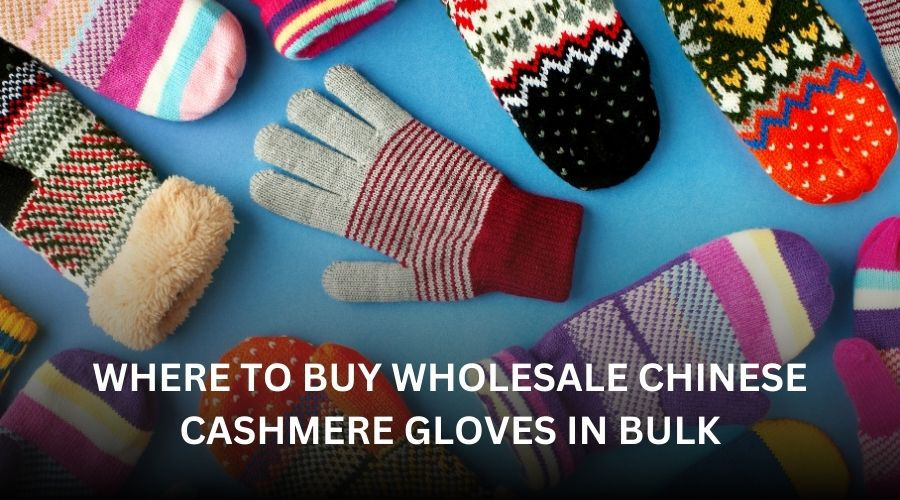Why Cashmere Gloves Are a Profitable Luxury Niche (And How to Tap Into It)
- Paul Tyler

- Apr 7
- 4 min read

We all love the feeling of slipping our hands into something soft, warm, and effortlessly elegant. That’s exactly why cashmere gloves have quietly become a powerhouse in the luxury market. But what makes them so special—and why should brands and shoppers pay attention? Let’s break it down.
Cashmere Gloves: Where Timeless Luxury Meets Modern Demand
Imagine a material so rare that only 0.5% of the world’s wool production is pure cashmere. To put that in perspective, while the global wool industry churns out 1.2 million tons annually, cashmere production barely hits 6,500 tons. This scarcity isn’t just a marketing gimmick—it’s rooted in geography. Cashmere comes from goats in Mongolia, China, and the Himalayas, where harsh winters force the animals to grow ultra-soft undercoats. Harvesting it? That’s a painstaking process. Workers hand-comb each goat during spring molting season, collecting just 150–200 grams of usable fiber per animal.
But here’s the kicker: Cashmere gloves aren’t just about rarity. They’re a perfect storm of craftsmanship, comfort, and shifting consumer values. Let’s explore why this niche is booming and how you can leverage it.
What Makes Cashmere Gloves a Luxury Staple?
1. The Magic of the Fiber
Cashmere’s appeal starts with its science. The fibers are 8 times finer than human hair and hollow at the core, which means they trap heat without adding bulk. Ever tried wool gloves that feel like oven mitts? Cashmere solves that. A high-quality pair (Grade A, with fibers under 15 microns) feels like a second skin—soft, breathable, and surprisingly durable if cared for properly.
Grade matters, though. Lower grades (B or C) use thicker fibers (up to 30 microns) and might blend in yak hair or silk. That’s why authentic cashmere gloves often start at 150 and climb to 500+.
2. Craftsmanship That Tells a Story
Mass-produced fashion can’t replicate the heritage behind cashmere. In Nepal and Mongolia, artisans still dye yarn by hand and weave gloves using techniques passed down for generations. Brands like Yulin Trade and White+Warren highlight this human touch, appealing to shoppers who crave authenticity. It’s not just a glove—it’s a piece of wearable art.
3. The “Quiet Luxury” Boom
Thanks to shows like Succession and influencers like Gwyneth Paltrow, understated elegance is in. People are ditching flashy logos for pieces that whisper sophistication. Cashmere gloves fit the bill perfectly. They’re subtle, versatile (pair them with a trench coat or a ski jacket), and radiate “I know quality when I see it” energy.
Why This Niche Is a Goldmine
Profit Margins That Speak Volumes
Let’s talk numbers. While wool gloves might retail for 50–100, cashmere starts at triple that. Why? Limited supply keeps demand (and prices) high. Plus, consumers in this niche aren’t price-sensitive—they’re buying into a lifestyle. For retailers, that means healthier margins and loyal customers.
The Psychology of Small Indulgences
After years of fast fashion fatigue, shoppers are choosing “forever pieces” over disposable trends. Cashmere gloves hit a sweet spot: They’re affordable compared to a $3,000 handbag but still feel indulgent. It’s why searches for “luxury cashmere gloves” spiked 40% last holiday season—they’re the ultimate “treat yourself” gift.
Sustainability as a Selling Point
Modern buyers care about ethics. Brands like Naadam and Yulin Trade source cashmere from farms that rotate grazing areas to prevent desertification. By highlighting eco-friendly practices, you tap into the 73% of millennials who’ll pay more for sustainable goods.
Who’s Buying Cashmere Gloves (And How to Reach Them)
Affluent Millennials/Gen Z: They want quality, sustainability, and Instagram-worthy aesthetics.
Corporate Gift Buyers: Law firms and tech giants are swapping branded pens for cashmere gloves in holiday gift boxes.
International Markets: In China and the UAE, cashmere is a status symbol. Align with local influencers to build credibility.
Challenges to Watch (And How to Solve Them)
Fakes and Fraud
Cheap blends flood the market. Combat this with transparency: Share your supply chain details and use certifications like the Sustainable Fibre Alliance’s label.
Environmental Concerns
Cashmere’s dark side? Overgrazing. Partner with farms that limit herd sizes or support initiatives like the Good Cashmere Standard.
Educating Customers
Most shoppers don’t know the difference between Grade A and Grade C. Use blogs or product pages to explain why your gloves cost more (e.g., “Our 14-micron fibers last 10+ years”).
The Future of Cashmere Gloves
Hybrid Designs: Think cashmere-lined leather gloves or touchscreen-compatible fingertips.
Gender-Neutral Styles: Unisex designs are up 200% in luxury searches. Keep colors minimalist (heather gray, cream) and avoid overly feminine details.
Social Media Storytelling: Showcase artisans at work. A short video of a weaver in Mongolia can justify a $300 price tag better than any product description.
Final Thoughts: Why This Niche Is Here to Stay
Cashmere gloves aren’t just a winter accessory—they’re a symbol of mindful consumption. For brands, they offer fat margins and a story worth telling. For shoppers, they deliver everyday luxury without the guilt of fast fashion. Whether you’re stocking your store or upgrading your wardrobe, this is one trend that’s built to last.
FAQs:
Q: Are cashmere gloves worth it?
A: Yes—they last decades with proper care.
Q: How to clean cashmere gloves?
A: Hand-wash in cold water, lay flat to dry.




Comments